Every time Liu Xianglan sits gracefully on the ground with her back straight, fastens a handloom around her waist, and begins to weave, a steady stream of questions flows from the curious visitors to her hometown of Wuzhishan city in South China's Hainan province.
They are mostly eager to learn how the colorful threads move back and forth on a set of anachronistic-looking tools and transform into the delicate patterns of Li brocade, says the woman in her 50s.
The loom, an ancient yet ingenious device, stretches before her, with one end tied to a wooden post secured by her feet, while the other is wrapped around her lower back, allowing her to control the tension of the threads through her posture and movements.
"This is warp thread and that is weft thread. These small wooden rods have different functions. Some are for pulling the threads or arranging the warp, and some are for securing the threads," says Liu from Fanmao village in Wuzhishan.
"The size of the fabric varies, so the number of threads required also changes. For example, a brocade that is 20 centimeters wide needs 50 to 60 bundles of threads, but for a 30-cm-wide piece, you need 150 bundles of threads."
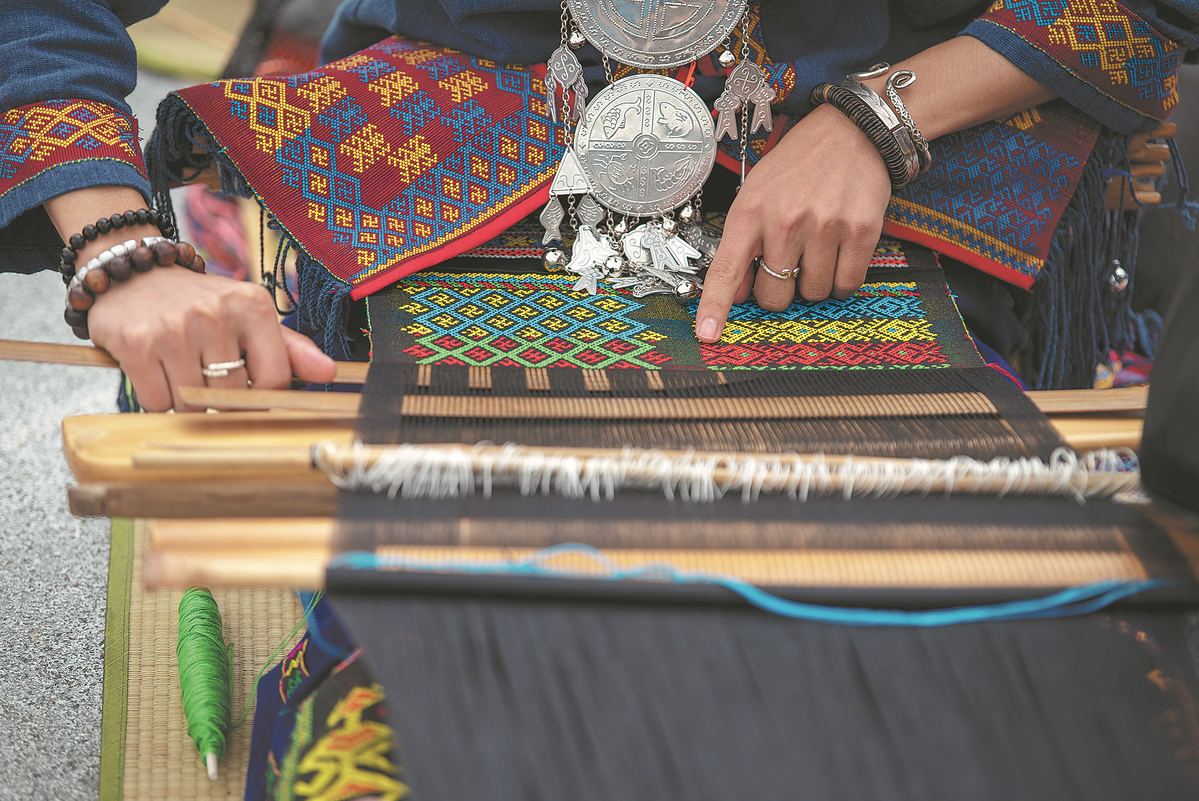
Intricate patterns come to life under the skilled hands of artisans. The traditional craft is part of the cultural heritage of the Li ethnic group in Hainan province.[Photo provided by Yuan Chen/For China Daily]
The explanation has been part of her routine to promote Li brocade for over 20 years.
The artisan says she felt encouraged when she saw President Xi Jinping appreciating the art form and saying that the intangible cultural heritage is both traditional and modern during his visit to Maona village in Wuzhishan in 2022.
China boasts a rich heritage of distinctive brocades, each reflecting the artistry and traditions of different regions.
Examples include Yunjin brocade from Nanjing in East China's Jiangsu province, known for its luxurious silk threads and gold weaving; Su brocade from Suzhou in Jiangsu, prized for its fine embroidery and delicate patterns; and Shu brocade from Southwest China's Sichuan province, characterized by its soft texture and vibrant hues.
These brocades, often associated with imperial courts and high society, showcase China's mastery of textile arts, which have evolved with technological advancements and cultural influences.
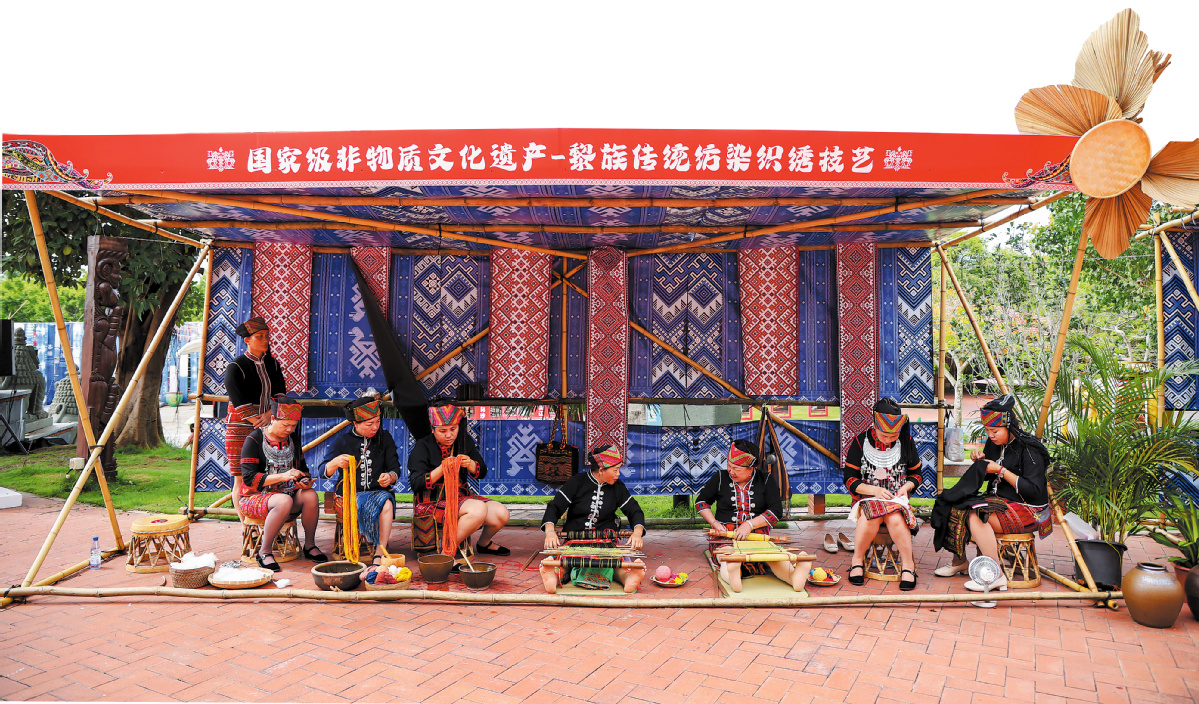
Artisans display their creations and making process for Li brocade during an intangible cultural heritage festival in Sanya, Hainan province, in 2024.[Photo provided to China Daily]
Li brocade stands apart as a "living fossil" — a rare, ancient textile tradition that has remained largely unchanged for over 3,000 years.
Unlike the sophisticated silk looms used for other brocades, Li brocade is made on a waist loom, preserving one of the world's oldest techniques.
"The Li ethnic group has a spoken language but no written script. Patterns of exotic flowers, plants, birds, beasts, the sun, moon and stars, as well as dancing and working figures on Li brocade, are a reflection of their customs, religious beliefs and daily life," says Liu.
"Each piece of Li brocade tells a story — a unique history book of the Li people."
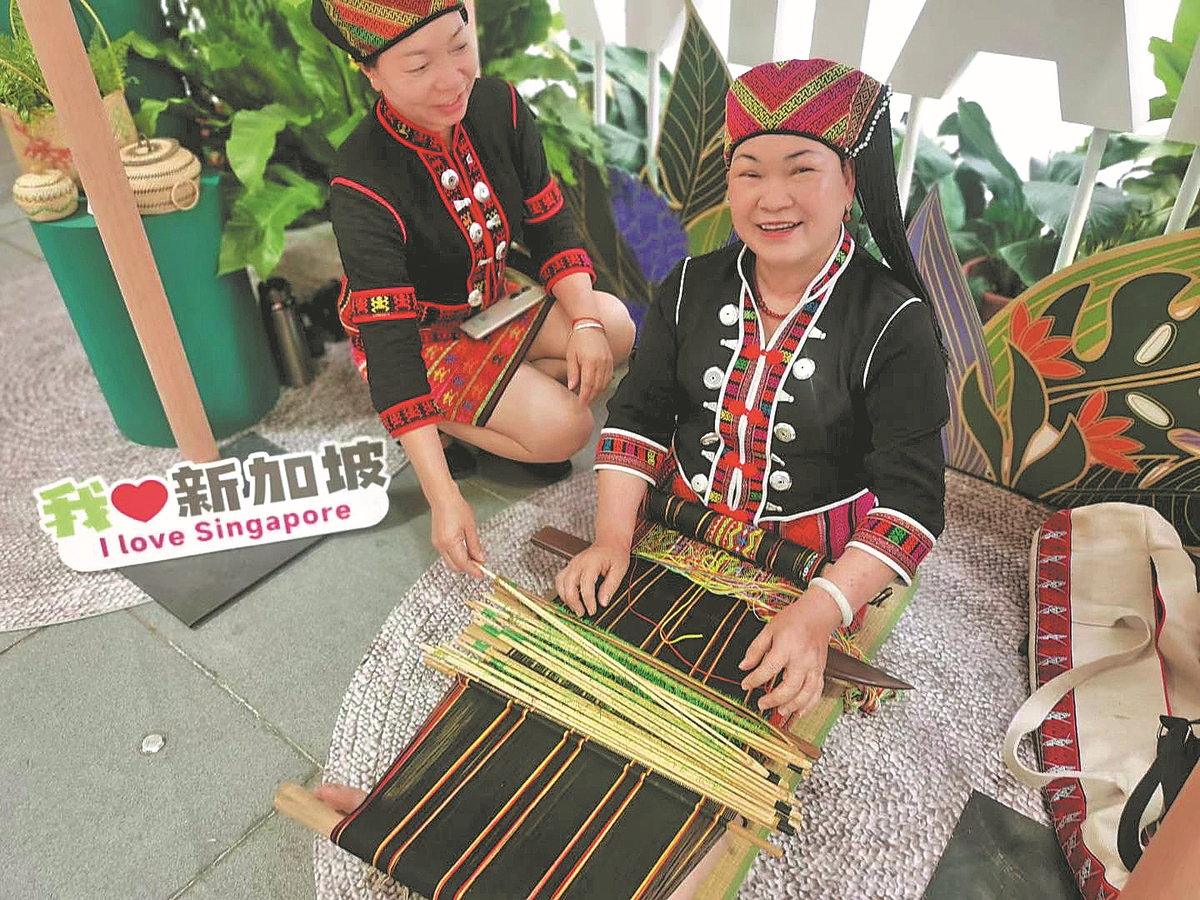
Liu Xianglan demonstrates the craft at different events.[Photo provided to China Daily]
Cultural legacy
Li women are taught textile techniques from a young age by their mothers — spinning, dyeing, weaving and embroidery. Despite the lack of books or illustrated records, generations of Li women have designed traditional elements using their imaginations to create stunning, colorful patterns in more than 160 varieties.
In 2006, the textile techniques of the Li people were among the first to be named a national intangible cultural heritage.
Yet, the ancient art form had been on the brink of extinction.
When it was listed by UNESCO as an Intangible Cultural Heritage in Need of Urgent Safeguarding in 2009, the number of people proficient in Li brocade in Hainan had dwindled to less than 1,000, most of whom were over 70 years old, according to local authorities.
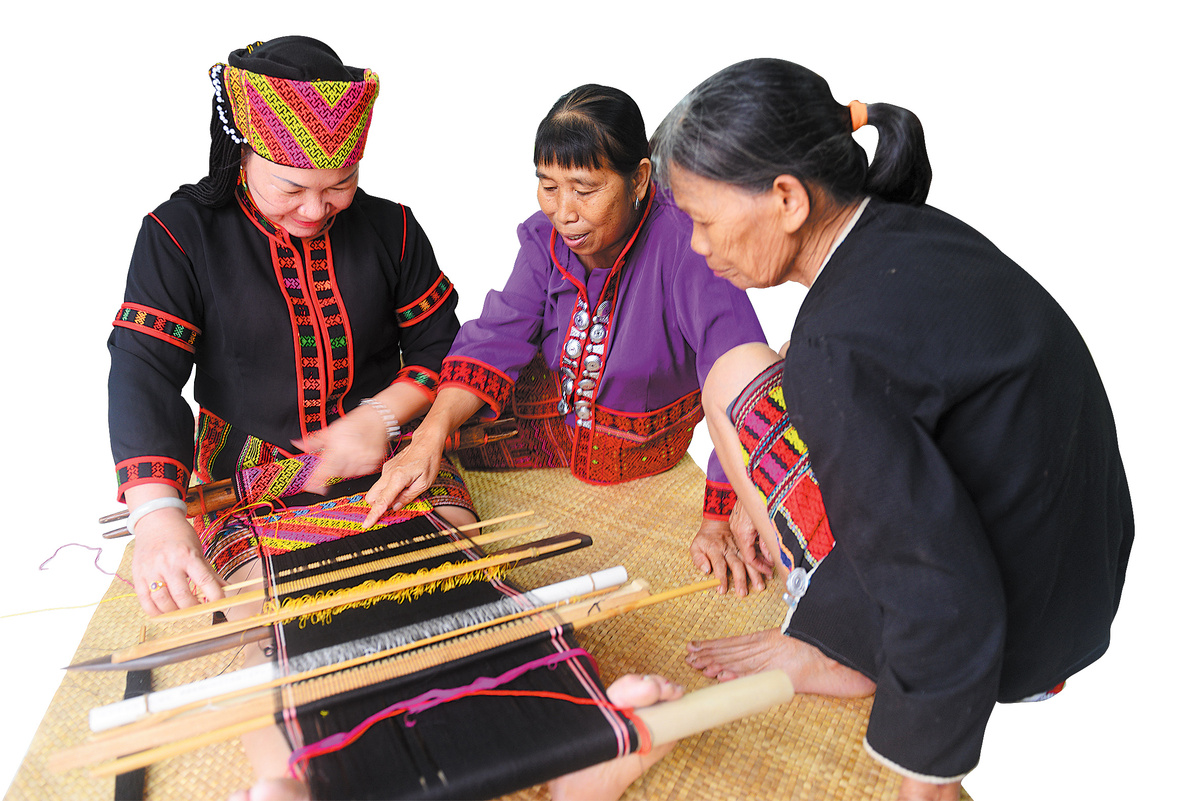
Liu Xianglan (left) teaches local women in Wuzhishan, Hainan province.[Photo provided to China Daily]
Liu remembers the first time her mother taught her the craft when she was 13.
"I was fascinated by the bright colors and vivid patterns that my mother produced and hoped someday I could weave beautiful textiles," Liu recalls.
She continued to hone her skills, and when she got married at 20, she made Li brocade to help with household expenses.
"Li brocade is an art that takes time to refine. A finished piece requires four steps: spinning, dyeing, weaving and embroidery, which can take three to four months, or longer," she says.
For the first step, after being rolled, twisted, pulled and shaped, the spun thread is cooked with rice paste and other ingredients, and then dried, resulting in a strong, durable thread that doesn't fray. The coloring process mainly uses natural dyes derived from wild plants, such as turmeric, chestnut and false indigo.
After binding, dyeing, drying and untying, the cotton threads are brought to life.
Then the weaver sits on the ground, with a handloom wrapped around her waist and her feet pressing on wooden rods holding the threads, and uses a bamboo shuttle to guide the threads, weaving back and forth.
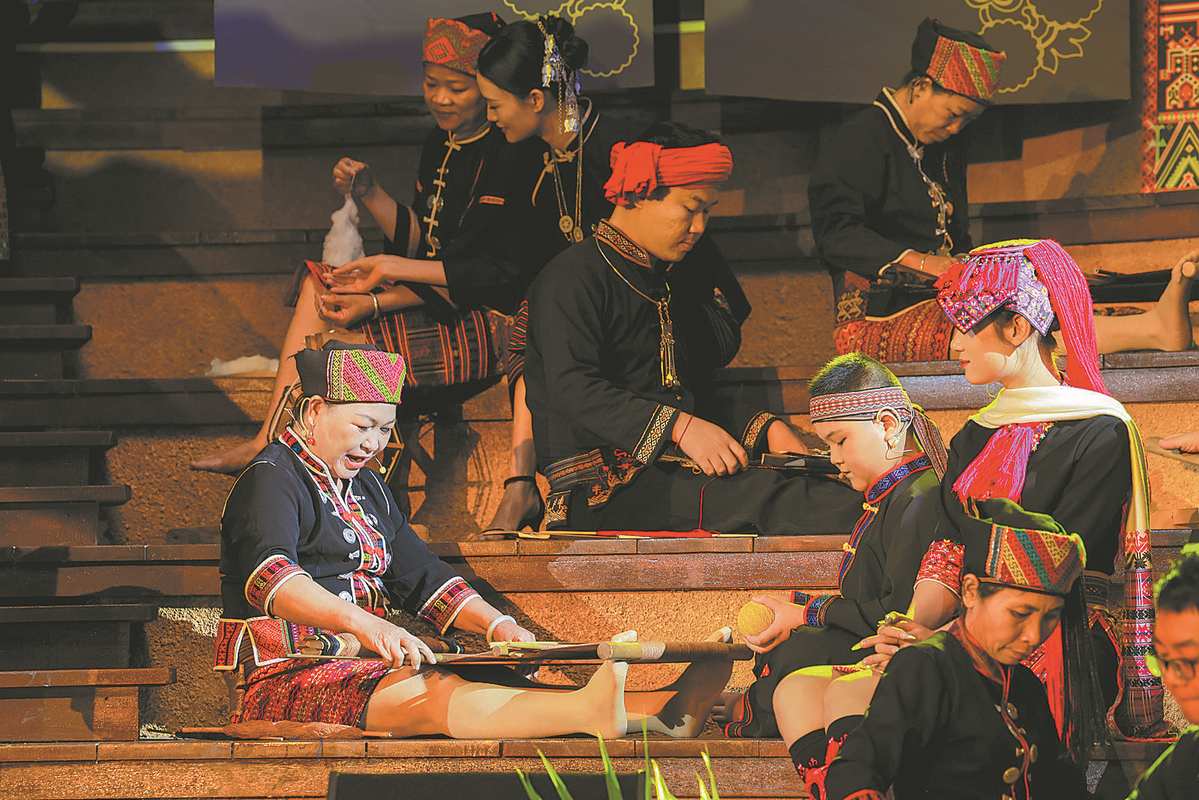
Liu Xianglan demonstrates the craft at different events.[Photo provided to China Daily]
Intricate patterns
The most fascinating step is the embroidery. Li women use fabric as their canvas and a shuttle as their pen to weave intricate patterns, relying on their imaginations and delicate needlework.
Nature is often abstracted into wave-like lines, triangles and star shapes. Animal and plant totems are symmetrically arranged.
Human patterns represent a tribute to ancestors and a plea for their protection. Fish patterns symbolize peace throughout the seasons and abundance year after year. Floral and grass patterns express wishes for happiness and good fortune.
Color choices are also meaningful. Black is believed to ward off evil and bring good luck; green symbolizes life and health; red, a favorite among women, is often paired with white to symbolize the purity of their hearts; and yellow represents male strength, peace and prosperity.
The use of light and shadow, combined with strong color contrasts, makes Li brocade even more vivid and full of life.
As Liu watched elderly artisans pass away one by one, she was overwhelmed by a sense of loneliness and loss.
This made her grit her teeth and persist. As she puts it, after weaving for decades, it felt as if she had woven her life into brocade and could not escape.
"The bottom line is that we shouldn't let this traditional skill become lost," she says.
In 2013, with support from the local government, she established a center in her village dedicated to the study and practice of brocade making, encouraging women to join the efforts to preserve this intangible cultural heritage.
The following year, she started a company selling products, including clothes and tapestries.
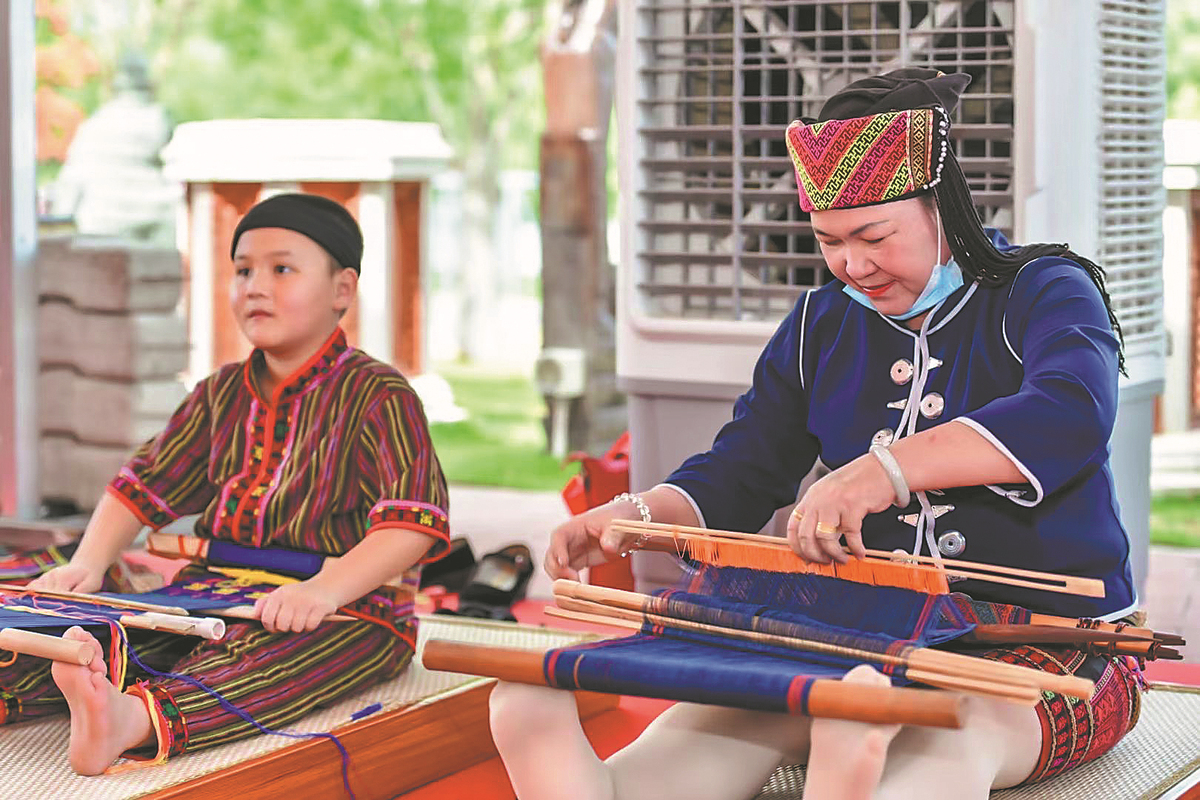
Liu's grandson Wang Chengye injects new vitality to the craft.[Photo provided to China Daily]
"Many of our members were also farmers toiling in the fields," Liu says, adding that the women have learned these traditional skills and improved their incomes and living standards.
In her spare time, Liu also teaches at vocational and primary schools to share the beauty of Li brocade.
According to Liu Liting, head of the cultural center in Wuzhishan, there are more than 60 city-level inheritors of Li brocade, and the city supports training in several forms.
In recent years, Hainan has invested in training institutes to teach Li brocade to locals. Since 2012, it has been a course in Hainan's primary and secondary schools.
Local authorities have also formulated a raft of measures to strengthen the protection and development of Li brocade, aiming to ensure the survival of these traditional skills.
Over the years, Li brocade has made appearances at the Boao Forum for Asia Annual Conference many years in a row, and has been given as a national gift to visitors in China and abroad.
Wuzhishan has sent groups of Li brocade practitioners to countries like Italy, Singapore and Japan to provide audiences with a firsthand experience of this art form.
In September last year, Li brocade made its way to Paris Fashion Week.
One of Liu Xianglan's recent engagements was demonstrating the art form to visitors to the 2024 (4th) Hainan Brocade and Embroidery World Culture Week in November.
"Cultural exchanges like this have inspired me," she says.
In December, the Li ethnic group's traditional textile techniques were among the three items — along with the Qiang New Year festival, a traditional annual event of the Qiang ethnic group in China, and traditional design and practices for building Chinese wooden arch bridges — to be moved from the UNESCO List of Intangible Cultural Heritage in Need of Urgent Safeguarding to the Representative List of the Intangible Cultural Heritage of Humanity.
This marks a significant step in intangible cultural heritage protection in Hainan and signifies that after years of preservation and development, the project is growing stronger and more resilient, says Chen Yi, vice-curator at the Hainan Provincial Museum of Nationalities.
"Our next step is to ensure the preservation and continuation of this project within the framework of the UNESCO Convention for the Safeguarding of the Intangible Cultural Heritage," Chen says.
Cultural authorities in Hainan plan to introduce a five-year inheritance and development action plan for the traditional spinning, dyeing, weaving and embroidery techniques of the Li people.
"This initiative seeks to enhance the visibility and influence of traditional skills, making them a vibrant cultural symbol of Hainan," Chen says.
Liu Xianglan says she is thrilled by the announcement.
"I sense an increase in the number of people who appreciate Li brocade. I believe its inheritance will go much further," she says.